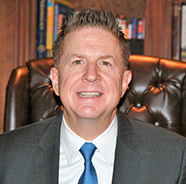Manufacturers seek to ‘take pain away’

By Liz Beaulieu, Editor
Updated 10:10 AM CST, Fri February 2, 2024
 YARMOUTH, Maine – The decision by Philips to discontinue its line of oxygen concentrators in the U.S. will leave a significant gap in the market, but manufacturers say they’re ramping up to meet increased demand, with lessons learned from the COVID-19 pandemic and the CPAP recall.
YARMOUTH, Maine – The decision by Philips to discontinue its line of oxygen concentrators in the U.S. will leave a significant gap in the market, but manufacturers say they’re ramping up to meet increased demand, with lessons learned from the COVID-19 pandemic and the CPAP recall.
Just prior to announcing it had agreed on the terms of a consent decree related to the recall, Philips announced on Jan. 25 that it was discontinuing sales for 19 products, including the EverFlo home oxygen system and the SimplyGo and SimplyGo Mini portable oxygen concentrators.
“We’re competitors and we’re all fighting for our share, but it’s never good for our industry when these things happen,” said Joe Lewarski, MHA, RRT, FAARC, senior vice president of clinical affairs for Drive DeVilbiss Healthcare based in Port Washington, N.Y., and formerly of Invacare, which had a consent decree with the U.S. Food and Drug Administration from about 2012-2017. “I don’t wish it on anybody.”
Philips stopped selling and shipping the EverFlo and SimplyGos on Jan. 25, but it will service the devices until Jan. 25, 2029.
Lessons learned
The news of the exit sent manufacturers into overdrive analyzing their operations to make sure they can meet increased demand. Working in their favor: They’re already operating at higher-than-normal inventory levels for “respiratory season,” when the flu, RSV and other illnesses historically increase demand for oxygen concentrators every year.
“We’re in a good position, organizationally, to support a rise in business,” said Doug Francis, president of Rhythm Healthcare based in Clearwater, Fla. “Coming through what we anticipated would be a big respiratory season, we stocked up accordingly. We’re in good shape to support providers who are looking for alternatives.”
Manufacturers also learned lessons about how to ramp up – and quickly – during the COVID-19 pandemic, which significantly increased demand.
“We quadrupled our output at the peak of COVID, and we’re re-enacting some of those actions, including ramping up the supply chain and bringing people back on,” Lewarski said. “Because of the pandemic, we have the infrastructure already in place to do that. But some of it will still be muscling through it.”
CPAP case study
Additionally, manufacturers that also have CPAP devices in their product portfolio learned lessons from the recall, which resulted in increased demand and, because of its timing during the COVID-19 pandemic and the peak of supply chain challenges, resulted in a period of allocations.
“We haven’t moved to allocations, but we’re definitely looking at orders coming in and making sure we vet each of them,” said Tod York, executive vice president of clinical sales for React Health based in Sarasota, Fla., which sells the Stratus 5 stationary oxygen concentrator and plans to go to market with Invacare’s line of concentrators, which it acquired last year, sometime late spring, early summer. “We want to make sure we’re not overpromising and that we’re actually delivering to the market. We’re getting calls saying, ‘We need concentrators today.’ If you don’t monitor things, you can satisfy those giant orders coming in and make 10 to 20 customers happy, but you may make 60 more customers who have been supportive mad.”
Perfect storm
Not in favor of manufacturers are supply chain challenges, which, while improved, still exist, with lead times for some components up to nine months, and the Chinese New Year, which effectively shuts down manufacturing there for 15 days starting on Feb. 10.
“We’re coming out of a period of supply chain challenges, but everyone is still reeling from that,” Francis said. "That’s putting stress on (operations). We're also looking at Chinese New Year. There’s a confluence of things happening that could impact supply. Those are things you prepare for, but no one has a crystal ball.”
Word of the day
Once they address the short-term needs of providers, manufacturers plan to work with them to address their longer-term needs.
“Forecasting – it’s the word of the day,” Lewarski said. “Our messaging and interactions with providers is, ‘The more intel we can get from you and the more intel you can get from hospitals, the more we can plan and the more we can take the pain away.’”
Comments